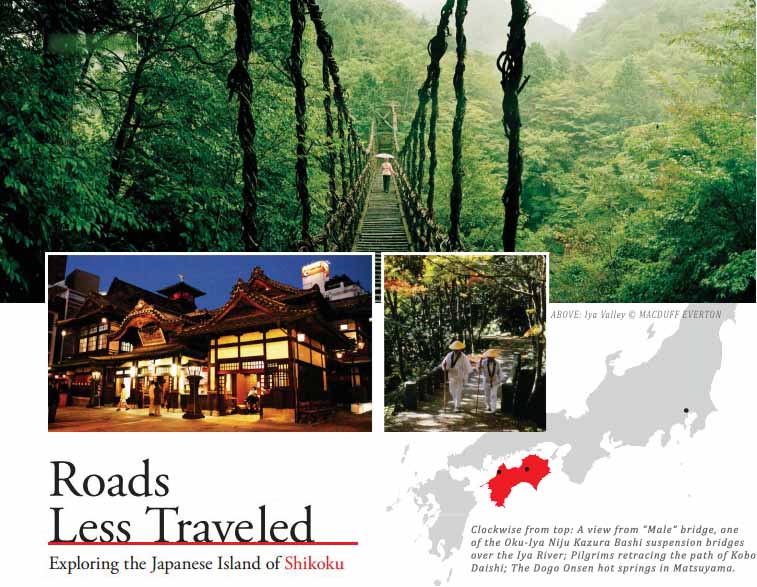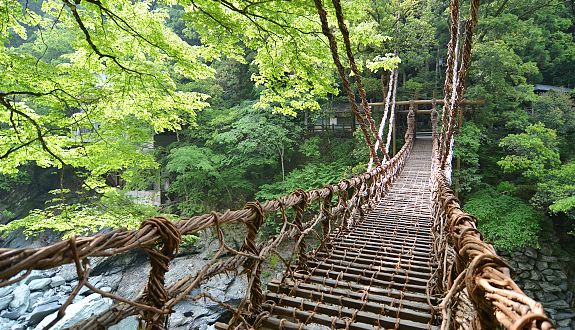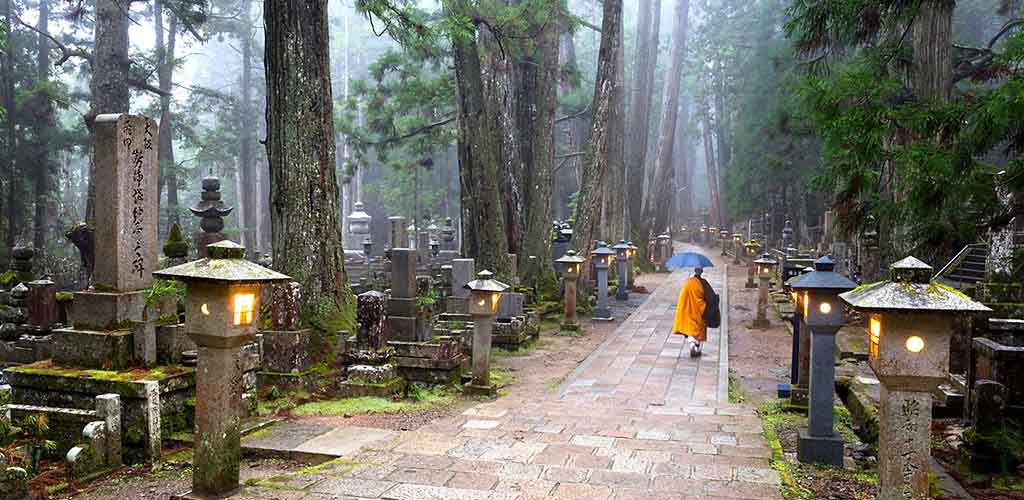Shikoku Island
If you've the time, while fitting in Tokyo, Kyoto, and other must-see destinations on your Japan trip, Shikoku offers an serene off-the-beaten place to explore the most beautiful landscapes in the country. Shikoku island remains the country's least visited and undeveloped, with a history dating back more than 3,000 years.

Of Japan’s four main islands—Hokkaido, Honshu, Shikoku, and Kyushu—Shikoku is the smallest and remains a world apart, mysterious even to many Japanese. A two-hour flight from Tokyo, its rugged beauty and isolation are typified by Iya Valley, a gorge located in the center of the island and surrounded by cliffs and lush forested mountains.
For centuries, the only way to navigate Shikoku’s challenging terrain was over suspension bridges. The 140-foot-long double- vine bridge, the Oku-Iya Niju Kazura Bashi, beckons as a thrilling link to the past, traversing the Iya River, a tributary of the mighty Yoshino.

Massive rock formations along the upper reaches of the Yoshino near Oboke and Koboke have made the area a favorite destination for hikers and photographers. This meandering river area was first trekked in the 9th century by Kukai, Japan’s most revered scholar, poet, and priest known posthumously as Kobo Daishi, who famously founded the Shingon school of Buddhism (on Mount Koyasan, one of our other favorite nature retreats in Japan, not far from Kyoto). Tracing small portions of his path, visitors join white-robed priests making regular pilgrimages along the circuitous route, passing through sacred mountain vistas and stopping along the way to pay homage in the 88 temples that adorn the path. 2014 marked the 1,200th anniversary of the Shikoku Pilgrimage, an 868-mile trek that loops the island and traces the spiritual. Slung across the canyons are remnants of the 12th-Century Genpei War: bridges made from mountain vines (above is the Kazurabashi vine bridge).
Narita-san Shinjoji Temple is the town's crown jewel and worshipers travel from all over the region to this cultural heritage temple during Buddhist holidays. One can easily spend half a day strolling the temple grounds and park, exploring its lush winding paths, ponds and pagodas. To enter the temple, you walk through a traditional Buddhist gate surrounded by nearby stalls that bear curious talismans. Markers dot the hillside to commemorate those who have contributed to the temple's well-being. Once you reach the top of the hill, the grounds open up immensely, and a large incense burner, located directly in front of the landing, douses the air with its heavy, yet cleansing smoke. Behind it, the pavilion building acts as the temple's main worship and meditation hall. To the right of the main hall lies the Sanjunoto, a three-tiered pagoda, one of the most intricately painted structures I have ever seen. Near the Sanjunoto, there are several benches are available for resting or meditation. If time allows, clients should take the hike up behind the main tier of the pagoda where they will discover small creeks that meander through dense foliage and converge at a lake. Clients should follow the shoreline, tracing a path that heads back into the woods, past a smaller temple, to finish the circuit.
The Dogo Onsen, a venerable hot springs spa and hotel, is a tranquil property to unwind after exploring Shikoku. In celebration of its 120th birthday, the hotel invited some of Japan’s best-known contemporary artists—including Nobuyoshi Araki, Fujiwo Ishimoto, and Yayoi Kusama—to re-imagine some of its guest rooms along dramatic themes. The designs brought to life inside the hotel extend throughout the city of Matsuyama as part of the Dogo Onsenart 2014 art festival. Works on display explore a mix of innovative design and playful modernity, providing a vivid collage of contemporary Japan.
Shikoku also offers some of the best whitewater rafting in Japan. After a day of excitement, retreat to your ancient ryokans, restaurants, and a hot-spring bath enjoying the fullest of Shikoku hospitality.

